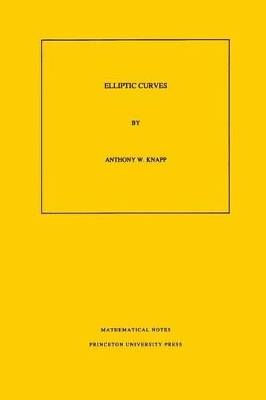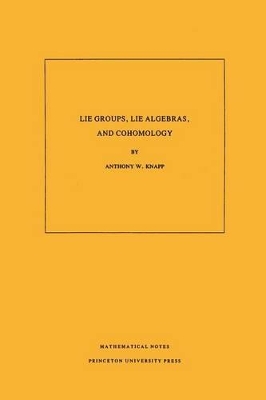Mathematical Notes
1 primary work • 2 total works
Book 40
An elliptic curve is a particular kind of cubic equation in two variables whose projective solutions form a group. Modular forms are analytic functions in the upper half plane with certain transformation laws and growth properties. The two subjects--elliptic curves and modular forms--come together in Eichler-Shimura theory, which constructs elliptic curves out of modular forms of a special kind. The converse, that all rational elliptic curves arise this way, is called the Taniyama-Weil Conjecture and is known to imply Fermat's Last Theorem. Elliptic curves and the modeular forms in the Eichler- Shimura theory both have associated L functions, and it is a consequence of the theory that the two kinds of L functions match. The theory covered by Anthony Knapp in this book is, therefore, a window into a broad expanse of mathematics--including class field theory, arithmetic algebraic geometry, and group representations--in which the concidence of L functions relates analysis and algebra in the most fundamental ways. Developing, with many examples, the elementary theory of elliptic curves, the book goes on to the subject of modular forms and the first connections with elliptic curves.
The last two chapters concern Eichler-Shimura theory, which establishes a much deeper relationship between the two subjects. No other book in print treats the basic theory of elliptic curves with only undergraduate mathematics, and no other explains Eichler-Shimura theory in such an accessible manner.
The last two chapters concern Eichler-Shimura theory, which establishes a much deeper relationship between the two subjects. No other book in print treats the basic theory of elliptic curves with only undergraduate mathematics, and no other explains Eichler-Shimura theory in such an accessible manner.
Lie Groups, Lie Algebras, and Cohomology. (MN-34), Volume 34
by Anthony W. Knapp
Published 21 May 1988
This book starts with the elementary theory of Lie groups of matrices and arrives at the definition, elementary properties, and first applications of cohomological induction, which is a recently discovered algebraic construction of group representations. Along the way it develops the computational techniques that are so important in handling Lie groups. The book is based on a one-semester course given at the State University of New York, Stony Brook in fall, 1986 to an audience having little or no background in Lie groups but interested in seeing connections among algebra, geometry, and Lie theory. These notes develop what is needed beyond a first graduate course in algebra in order to appreciate cohomological induction and to see its first consequences. Along the way one is able to study homological algebra with a significant application in mind; consequently one sees just what results in that subject are fundamental and what results are minor.

